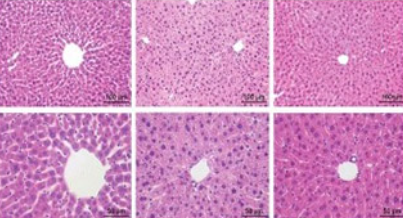Isoflurane and postoperative respiratory depression following laparoscopic surgery: A retrospective propensity-matched analysis
DOI:
https://doi.org/10.17305/bjbms.2017.2478Keywords:
Isoflurane, respiratory depression, laparoscopic surgery, general anesthesia, postoperative recoveryAbstract
Episodes of respiratory depression during the immediate postoperative recovery period (Phase I post-anesthesia recovery) have been associated with respiratory complications during Phase II recovery. Using multivariable analyses in several surgical cohorts, we previously identified potential associations between patient and perioperative factors and increased risk for Phase I respiratory depression. The aim of this study is to use the propensity-matched analysis to specifically assess for a potential association between the use of isoflurane and episodes of Phase I respiratory depression after laparoscopic operations. The electronic medical records of 8567 patients who underwent laparoscopic operations between January 1, 2010 and July 31, 2014, lasting ≥90 minutes, were retrospectively analyzed. Propensity-matched patients anesthetized without isoflurane were identified for 3403 patients anesthetized with isoflurane. Compared to the use of desflurane, sevoflurane or propofol infusion, maintenance of anesthesia with isoflurane was associated with an increased likelihood of Phase I respiratory depression (OR 95% CI, 1.32, 1.15-1.50, p < 0.001) and longer Phase I recovery (126 vs. 110 minutes, p < 0.001). The use of isoflurane was associated with increased rates of postoperative respiratory depression and postoperative recovery when compared to sevoflurane, desflurane, or propofol infusion.
Citations
Downloads
References
Gali B, Whalen FX, Schroeder DR, Gay PC, Plevak DJ. Identification of patients at risk for postoperative respiratory complications using a preoperative obstructive sleep apnea screening tool and postanesthesia care assessment. Anesthesiology 2009;110(4):869-77. https://doi.org/10.1097/ALN.0b013e31819b5d70.
Weingarten TN, Herasevich V, McGlinch MC, Beatty NC, Christensen ED, Hannifan SK, et al. Predictors of delayed postoperative respiratory depression assessed from naloxone administration. Anesth Analg 2015;121(2):422-9. https://doi.org/10.1213/ANE.0000000000000792.
Weingarten TN, Bergan TS, Narr BJ, Schroeder DR, Sprung J. Effects of changes in intraoperative management on recovery from anesthesia: A review of practice improvement initiative. BMC Anesthesiol 2015;15:54. https://doi.org/10.1186/s12871-015-0040-x.
Weingarten TN, Jacob AK, Njathi CW, Wilson GA, Sprung J. Multimodal analgesic protocol and postanesthesia respiratory depression during phase I recovery after total joint arthroplasty. Reg Anesth Pain Med 2015;40(4):330-6. https://doi.org/10.1097/AAP.0000000000000257.
Cavalcante AN, Sprung J, Schroeder DR, Weingarten TN. Multimodal analgesic therapy with gabapentin and its association with postoperative respiratory depression. Anesth Analg 2017;125(1):141-6. https://doi.org/10.1213/ANE.0000000000001719.
Glynn RJ, Schneeweiss S, Stürmer T. Indications for propensity scores and review of their use in pharmacoepidemiology. Basic Clin Pharmacol Toxicol 2006;98(3):253-9. https://doi.org/10.1111/j.1742-7843.2006.pto_293.x.
Sessler CN, Gosnell MS, Grap MJ, Brophy GM, O’Neal PV, Keane KA, et al. The Richmond agitation-sedation scale: Validity and reliability in adult intensive care unit patients. Am J Respir Crit Care Med 2002;166(10):1338-44. https://doi.org/10.1164/rccm.2107138.
Gali B, Whalen FX Jr, Gay PC, Olson EJ, Schroeder DR, Plevak DJ, et al. Management plan to reduce risks in perioperative care of patients with presumed obstructive sleep apnea syndrome. J Clin Sleep Med 2007;3(6):582-8.
Aldrete JA, Kroulik D. A postanesthetic recovery score. Anesth Analg 1970;49(6):924-34. https://doi.org/10.1213/00000539-197011000-00020.
Jacox A, Carr DB, Payne R, Berde CB, Breitbart W, Cain JM, et al. Management of cancer pain. Clinical Practice Guideline No. 9. AHCPR Publication No. 94-0592. Rockville (MD): Agency for Health Care Policy and Research, US Department of Health and Human Services, Public Health Service; 1994.
American Pain Society. Principles of Analgesic Use in the Treatment of Acute Pain and Cancer Pain. 4th ed. Glenview, Illinois: American Pain Society; 1999.
Flemons WW. Clinical practice. Obstructive sleep apnea. N Engl J Med 2002;347(7):498-504. https://doi.org/10.1056/NEJMcp012849.
Agoliati A, Dexter F, Lok J, Masursky D, Sarwar MF, Stuart SB, et al. Meta-analysis of average and variability of time to extubation comparing isoflurane with desflurane or isoflurane with sevoflurane. Anesth Analg 2010;110(5):1433-9. https://doi.org/10.1213/ANE.0b013e3181d58052.

Downloads
Additional Files
Published
Issue
Section
Categories
License
Copyright (c) 2018 Bosnian Journal of Basic Medical Sciences

This work is licensed under a Creative Commons Attribution 4.0 International License.
How to Cite
Accepted 2017-10-08
Published 2018-02-20









